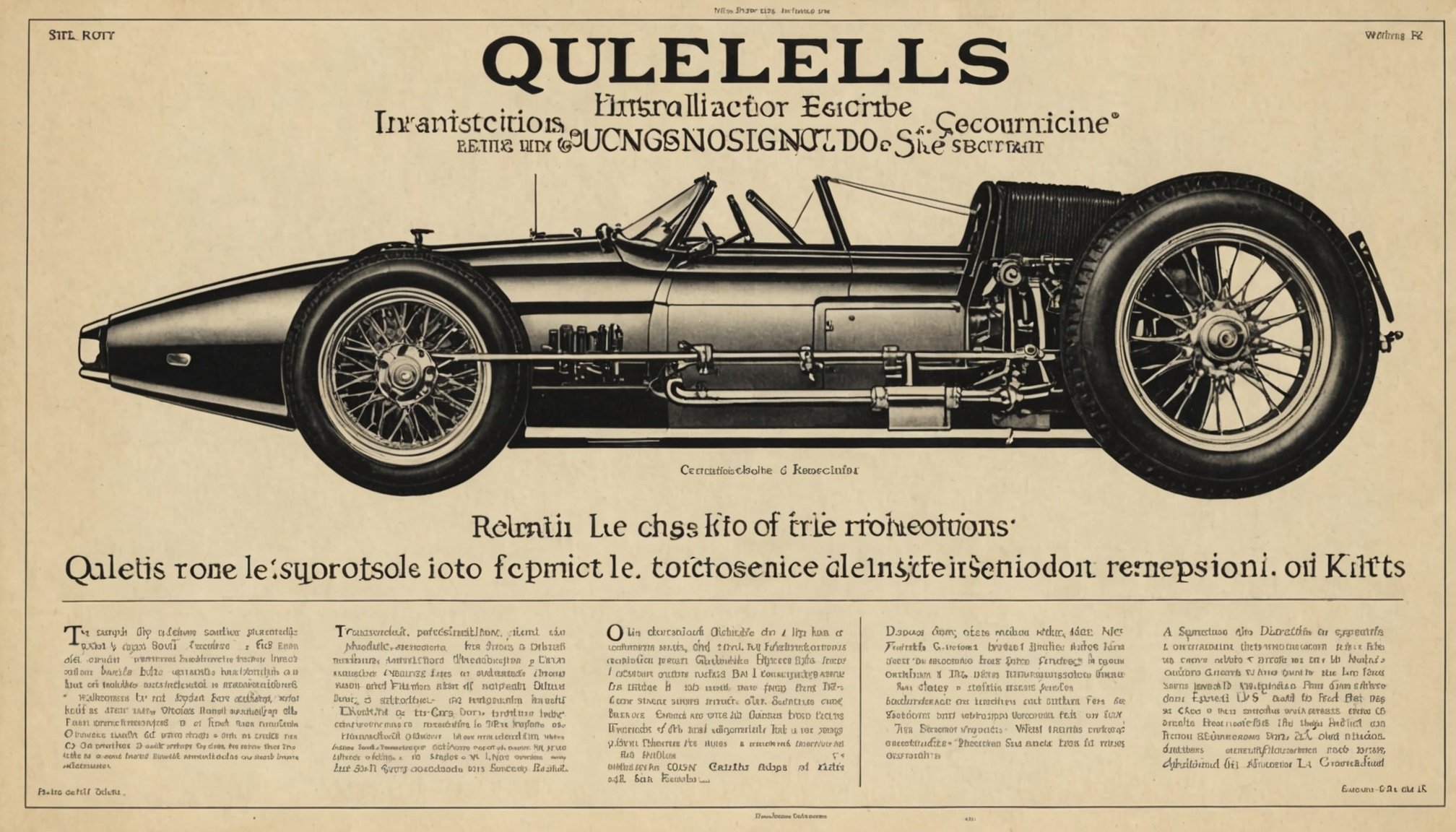As car enthusiasts, you know that a car isn’t just about getting from point A to point B. It’s about the experience of driving, the roar of the engine, the feel of the road beneath the tires, and the thrill of acceleration. For many of you, modifying your car to improve its performance and ride quality is an essential part of this experience. One popular modification is the installation of aftermarket suspension kits. But installing these kits isn’t as simple as just buying them and bolting them on. It involves a series of safety protocols that you need to follow to ensure a safe and successful installation process. In this article, we will discuss the safety protocols involved in installing aftermarket suspension kits.
Understanding Aftermarket Suspension Kits
Before you delve into the installation process, it’s crucial to understand what aftermarket suspension kits are and how they work. Aftermarket suspension kits are enhancements that replace or augment components of a car’s original suspension system. These kits typically include parts like coil overs, shock absorbers, struts, and sway bars. The purpose is to improve the car’s handling, performance, and aesthetics.
Also to read : How can you ensure that a vehicle’s automatic transmission is functioning optimally for safety?
But these enhancements are not plug-and-play components. They require careful installation to ensure they don’t compromise the vehicle’s safety and performance. This is where safety protocols come into play.
Familiarizing Yourself with the Vehicle’s Original Suspension System
The first safety protocol for installing aftermarket suspension kits is to get familiar with the vehicle’s original suspension system. Every vehicle model has a unique suspension system, and understanding it is vital for a successful installation.
In parallel : What are the steps to ensure the proper maintenance of a vehicle’s turbocharger system?
Start by studying your vehicle’s manual. It should provide essential information about the suspension system, including its components and their locations. You might also find an exploded view diagram of the system, which can be incredibly helpful.
Next, research online or consult with a professional mechanic. They can provide additional insights, like known issues with your vehicle’s suspension system or tips for installing aftermarket kits on your specific car model.
Using the Right Tools
The second safety protocol involves using the right tools for the job. This doesn’t just mean having a wrench and a screwdriver. You’ll need specialized tools like a coil spring compressor and a hydraulic jack, among others.
Having the right tools ensures that you can adequately handle the installation process. It also minimizes the risk of damaging your vehicle or injuring yourself. Always verify the tools you’ll need before starting the installation. If you don’t have the necessary tools, consider hiring a professional to do the job.
Ensuring Proper Installation
Proper installation is a critical safety protocol when installing aftermarket suspension kits. Incorrect installation can lead to a wide range of problems, from decreased performance and ride quality to potential accidents.
Always follow the installation instructions provided with the aftermarket suspension kit. These instructions are designed to guide you through the process and ensure a successful installation. If the kit doesn’t come with instructions, seek guidance from a professional or look for a reliable online guide.
During the installation process, take your time. Rushing through the steps increases the chance of mistakes. Also, never force parts to fit. If a part doesn’t seem to fit right, double-check your work and the instructions.
Maintaining the Aftermarket Suspension Kit
Once the aftermarket suspension kit is installed, your job isn’t done. Maintenance is an ongoing safety protocol that you need to follow. Regular maintenance ensures that the kit continues to function correctly and safely.
Typically, your aftermarket suspension kit should be inspected at least once a year or every 12,000 miles. However, your specific maintenance schedule may vary based on the brand and model of the kit, as well as how you use your vehicle. Always follow the recommended maintenance schedule for your specific aftermarket suspension kit.
When performing maintenance, pay attention to signs of wear or damage, like leaks, rust, or cracks. If you notice any of these issues, consult a professional. They can help you determine whether the part needs to be repaired or replaced.
Conclusion
Safety should always be your top priority when installing aftermarket suspension kits. By following the protocols discussed in this article, you can enhance your vehicle’s performance and ride quality, while also ensuring its safety on the road. Remember, if you ever feel unsure or uncomfortable during the installation process, don’t hesitate to seek professional help. It’s always better to be safe than sorry.
Testing and Adjusting After Installation
After installing your aftermarket suspension kit, it is essential to test and adjust it. Testing and adjusting are vital safety protocols that should not be overlooked.
Start by performing a visual inspection. Look over the entire suspension system to ensure all parts are seated correctly and that there are no loose or missing bolts. Also, check that there’s proper clearance between the suspension components and the wheels, as well as other parts of the vehicle.
Once you’re confident with the visual inspection, it’s time to test drive your vehicle. Start slow, on an empty road or car park, and gradually increase your speed. Pay attention to how the vehicle handles and any noises that may indicate a problem.
The purpose of this test drive is not just to enjoy the new performance of your car, but more importantly, to verify the safety and quality of the installation. Listen for unusual sounds – squeaks, rattles, or groans. A well-installed suspension kit will not make these noises.
Feel for unusual vibrations or a loose steering wheel, as these may indicate a problem. If you notice any odd sounds, feelings, or behaviors, it’s crucial to stop driving and inspect the vehicle or consult a professional.
The testing phase also includes adjusting your new suspension system. This might involve setting the ride height, adjusting the damping, or aligning the wheels. These adjustments are important to ensure your vehicle handles correctly and is safe to drive. Remember, every vehicle and every aftermarket suspension kit is different, so the adjustments needed will vary.
The Role of Professionals in Aftermarket Suspension Installation
While it’s possible to install an aftermarket suspension kit yourself, it’s not always the best or safest option. For many car owners, hiring a professional is a crucial safety protocol.
Professionals have the training, experience, and tools necessary to install aftermarket suspension kits safely and correctly. They know how to handle the complexities and challenges that often come with installing these kits.
The benefit of using a professional isn’t just about the installation process. They can also provide valuable advice and guidance. For example, they can help you choose the right kit for your vehicle and your driving needs. They can also guide you through the maintenance and any potential issues down the line.
While it might cost more upfront to hire a professional, it can save you money in the long run. Improperly installed suspension kits can damage your vehicle, decrease its performance, and even pose safety risks.
If you’re not confident in your ability to safely and correctly install an aftermarket suspension kit, seriously consider hiring a professional. It’s not just about improving your car’s performance, but also ensuring the safety of everyone on the road.
Modifying your car with an aftermarket suspension kit can significantly enhance your driving experience. However, safety should always be the priority. From understanding the original suspension system, using the right tools, ensuring proper installation, to testing and adjusting after installation, and considering the role of professionals – each step is integral to the overall safety protocol.
While it might seem like a lot, these protocols are there to ensure your safety and that of other drivers. Remember, if you ever feel uncomfortable or unsure during the process, don’t hesitate to seek help from a professional. After all, the joy of driving is best enjoyed when we know we’ve taken all measures to ensure we’re safe on the road.











